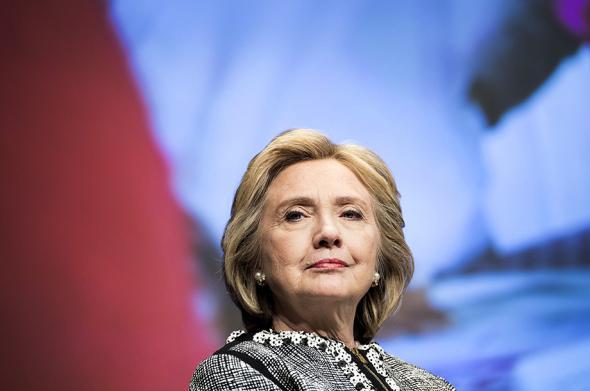“Everyday Americans need a champion. And I want to be that champion.” With that, at the end of a two-minute video released Sunday, Hillary Clinton announced her second campaign for the presidency. This is not a surprise. For the last three years—and arguably, since the 2008 presidential election—she’s been working toward this moment. Now, after persuading skeptics and winning new allies, she is the consensus choice of the Democratic Party. And for all the problems that come with an openly uncontested nomination fight, this is arguably the best of all present outcomes. The party is neither as favored nor as unified as it appears, and for all of her flaws, Clinton is the best chance it has for keeping the White House.
It’s worth looking back to 2007, when Republicans were fighting to hold the Oval Office. George W. Bush began the year with abysmal approval ratings, the GOP had lost both chambers of Congress, and the economy was weak, slowing down to an eventual recession.
Compared with this, Barack Obama and the Democrats look OK. Yes, they faced a second midterm wave in four years and lost the Senate—ceding control to the GOP—but as of this month, the president is more popular than he has been in a year, with an average approval rating of 46 percent. And while his legislative agenda has long since stalled, he’s made ample use of executive authority to protect his core accomplishment—the Affordable Care Act—and advance priorities in immigration, climate change, and civil rights.
But none of that will stand if the Democratic Party can’t win in 2016. And while Obama and the Democrats aren’t as bad off as Bush and the Republicans were in 2007, they’re not in a good place either. At 32 percent, according to a November survey from the Pew Research Center, Democratic Party identification is at its lowest point since 2008 (although Republican Party identification remains in the high 20s).

Photo by T.J. Kirkpatrick/Getty Images
Likewise, pluralities of Americans don’t trust Democrats to handle core issues like the economy and foreign policy. In a Gallup survey last November, after the election, 53 percent of respondents said they wanted Republicans to have more influence than Obama. And in a March CNN poll, 57 percent said they wanted the next president to change most of the policies of the present administration.
There’s an argument—a strong one—that the Democratic Party holds a natural advantage in presidential elections. From the get-go, when you tally the electoral votes of reliably “blue” states in the Northeast, the Rust Belt, and the West Coast, Democrats start with a 37 electoral vote advantage over Republicans, 190 to 153. If you add lean Democratic and lean Republican states to the mix—places where a party consistently wins with margins between 5 and 10 percentage points—Democrats start the 2016 presidential election with 257 electoral votes out of the 270 they need to win. Add Virginia to the total—which has gone blue in four out of its last five statewide elections—and Democrats have the presidency.
But this model is deceptive in that it assumes static conditions: a growing economy, relative peace, and either a popular Democratic incumbent (as in 2012) or an unpopular Republican president (as in 2008). If we continue on our current course, we’ll have a growing economy in 2016. And barring a new war, we’ll have relative peace. But we may also have an unpopular Democratic president and a public that—after eight years—will likely want a change of pace. In that environment, anything can happen. Democrats could capture the presidency, or their national strength could collapse as the country swings to the Republican Party.
It doesn’t help that Democrats are in modest disarray. Despite Obama’s political success and powerful legacy—the first Democrat since Franklin Roosevelt to command a majority of the popular vote in two elections and the first black president and the namesake to the largest social safety net expansion since Lyndon Johnson’s Great Society—the president presides over a divided party. One wing, personified by Massachusetts Sen. Elizabeth Warren, is furious with Obama’s relationship to Wall Street, his penchant for compromise, and his willingness to always take a half loaf—to rarely take a stand against his ideological opponents.
They wanted a president who would speak to their concerns, who would reverse the Bush years and usher in a new progressive era. They have had scathing criticism for Obama’s economic and foreign policies, and they want to preserve the best of his tenure—such that it is—while making a definitive break with the style and conduct of his administration. “Enough is enough with Wall Street insiders getting key position after key position and the kind of cronyism that we have seen in the executive branch,” said Warren in a fiery December speech on the Senate floor. “Enough is enough with Citigroup passing 11th-hour deregulatory provisions that nobody takes ownership over but everybody will come to regret. Enough is enough.”
The other wing is the mainstream of the Democratic Party. It’s content with the progress of the Obama administration and more interested in protecting its gains from a radical-minded Republican Party than expanding the possible of liberal politics. You can see some of this instinct for self-preservation in the reactions of the midterm wipeout, as some senior Democrats— like New York Sen. Chuck Schumer—searched for something that could have saved their majority from the GOP. “Unfortunately, Democrats lost the opportunity the American people gave them. We took their mandate and put all of our focus on the wrong problem—health care reform,” said Schumer in a November speech at the National Press Club in Washington.
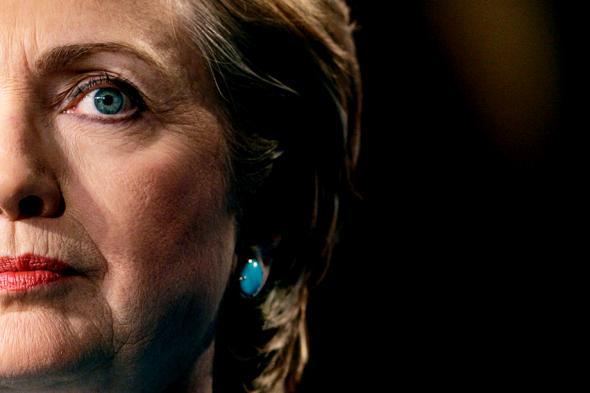
Photo by Jim Young/Reuters
Ideologically, this wing hasn’t tried to grapple with the shifting winds of Democratic politics. The best example of this was the December funding fight, where the White House and its allies sacrificed parts of Dodd-Frank financial reform in order to fund the government for the next fiscal year. The political logic was sound: Cutting a deal with a Democratic Senate and a Republican House in a lame duck session is much preferable to cutting a deal with GOP majorities in both chambers. But the attack on financial reform—led by Democrats and Republicans—enraged liberals, who—led by Warren—tried to scuttle the bill and shut down the government. The White House eventually prevailed, but not before further angering anti-Wall Street liberals.
All of this is to say that if presidential primaries are places where parties define themselves, then 2016 has the makings of a real struggle, where Democrats fight to chart a direction for the next decade. Or it would, if not for Clinton.
What Hillary Clinton Means for the Democratic Party
It’s fitting that Hillary Clinton stands as the natural successor to President Obama. Savvy and politically ambitious, she leveraged her time as first lady to win a Senate seat, run a path-breaking presidential campaign, and serve four years as secretary of state in the Obama White House.
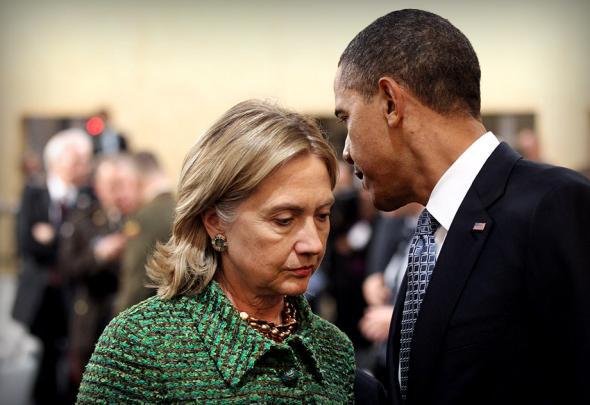
Photo by Miguel Villagran/Getty Images
Now, she’s one of the most popular political figures in the country. HuffPost Pollster’s average gives her a 48 percent favorable and 46 percent unfavorable rating. As an isolated number, that sounds just OK. But consider this: President Obama has a 48 percent favorable rating and a 48 percent unfavorable rating. Vice President Joe Biden has a 42 percent favorable rating and 45 percent unfavorable rating, and outgoing Senate Minority Leader Harry Reid—albeit less well-known than the president and vice president—has a 23 percent favorable rating and a 43 percent unfavorable rating. Even Warren—crusader of the Democratic left—has just a 30 percent favorable rating (and a 33 percent unfavorable rating as well). If Clinton were unknown, this might be a problem. But she’s among the most known figures in politics. An almost 50 percent favorable rating, put differently, is fairly impressive.
Among Democrats, there’s no competition. In the most recent average, Clinton takes nearly 60 percent of the primary vote. Her next two competitors—Warren and Biden—take 12 percent each. By contrast, in 2007, she was just a modest favorite for the nomination.
The answer for why Clinton is so popular (among Democrats, at least) is easy: Not only is she strongly associated with one of the most well-liked presidents in recent memory—her husband, Bill Clinton—but she also retains considerable goodwill from her first presidential campaign and her service in Obama’s State Department, where she disproved the idea that she’s only in the game for herself.
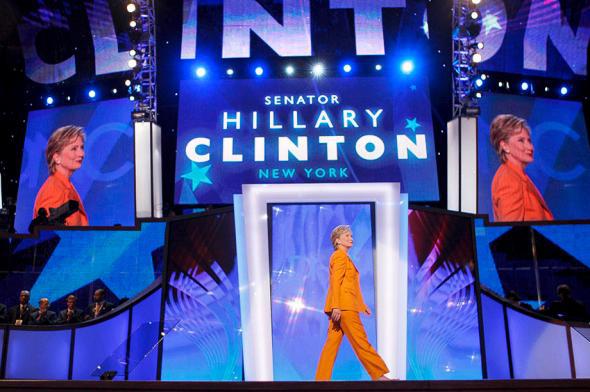
Photo by Brian Snyder/Reuters
This is why it’s wrong to call her triumph a “coronation.” If Clinton has the overwhelming support of the Democratic Party network—from donors and establishment figures to activists and ordinary voters—it’s because she earned it, the dividends paid after eight years of hard work. Likewise, Clinton isn’t a “dynasty” candidate; her White House time gave her a shot at a career, but by this point, she’s earned her spot near the top of American politics.
And as for Clinton versus Republicans? Neither Jeb Bush (33 percent favorable, 49 percent unfavorable), Scott Walker (26 percent favorable, 27 percent unfavorable), nor Florida Sen. Marco Rubio (30 percent favorable, 31 percent unfavorable) have comparable ratings. Indeed, there’s no one of Hillary Clinton’s visibility and prominence who is as popular as she is.
Clinton’s popularity isn’t an idle observation. It’s the defining fact of the present Democratic Party. Clinton’s strength—her influence across the breadth of the Democratic Party—is a unifying force. Polls make it clear that almost every constituency in the party, from liberals and blue dogs to black Americans and working-class whites, is ready for her candidacy. The ideological divide in the Democratic coalition—the fight between Wall Street–friendly Democrats in the center and populist Democrats on the left—is dampened by her presence, not because of any sudden love or affection, but because the various factions see Clinton as the key to keeping the White House and saving the gains of the Obama administration from a far right—and come 2016, restless—Republican Party. It’s no surprise that the bulk of the Democratic Party machinery has fallen behind Clinton. Given the stakes, no one wants open warfare.
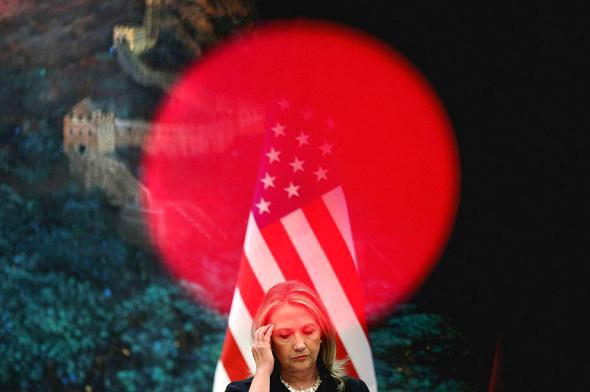
Photo by Feng Li/Reuters
At the same time, it’s not as if she isn’t on a side. Clinton is tightly tied to the centrist mainstream of the Democratic Party. Not only was she part of the “Third Way” of pro–market reform Democrats in the 1990s, but she was also a New York senator who voted for the wars in Iraq and Afghanistan. And in the years since, she’s maintained her hawkishness (as revealed in her 2014 book, Hard Choices) and her ties to Wall Street. In a sense, the fact of her strength is a sign that anti–Wall Street Democrats are weak, that they can’t actually contest political leadership of the party.
Of course, there are other ways to lead.
What About Elizabeth Warren?
For the last year, Warren has fielded one relentless question from the Washington press corps: Are you running for president? In December 2013, after writer Noam Scheiber suggested it in a story for the New Republic, she denied the thought. “I am not running for president,” Warren said. “I am working as hard as I can to be the best possible senator that I can be and to fight for the things that I promised during my campaign to fight for.” During the tour for her book, A Fighting Chance, she was asked, and she answered. “I’m not running for president,” said Warren to an audience of enthusiastic supporters. And after her recent crusade against a spending bill that weakened Dodd-Frank—yielding a viral speech in which she slammed “cronyism” in the “executive branch”—Warren told NPR host Steve Inskeep that she wasn’t running. Four times.
Despite Warren’s support for a Clinton candidacy—she signed a letter endorsing Hillary last year—and her willingness to forgive Clinton for supporting pro–Wall Street legislation, the assumption for the past year has been that Warren must have a challenge in mind. After all, the most vocal Republican senators—Rubio, Kentucky Sen. Rand Paul, and Texas Sen. Ted Cruz—are all angling for the nomination, and Warren—with her unabashed liberalism and strident attacks on opponents—has more in common with them than she does quieter, less media-savvy senators. But there’s another possibility: Warren isn’t running for president; she’s trying to build influence. Elizabeth Warren, to borrow an argument from the Washington Post’s Dana Milbank, is the Democrats’ Jim DeMint, an ideological leader for a “left-wing analogue to the Tea Party.” Warren, Milbank notes, has rallied liberals to oppose White House deals and White House nominees, like investment banker Antonio Weiss, Obama’s pick for the No. 3 position at the Treasury Department. DeMint “cared about policy and took a long view of politics,” and Warren seems to be following suit.

Photo by Chip Somodevilla/Getty Images
What she wants is to set the agenda for the party and the nominee, to ensure that any Democrat who runs for president is also committed to a set of core issues. Which is just another way to say that Warren doesn’t want to beat Clinton as much as she wants to pull her to the left. As a candidate, Warren can’t do this—Clinton is just too strong. But as someone who can claim allegiance from other factions and give a seal of approval, she might succeed.
And what would all of this mean in practice? Potentially, it means a Clinton who is less solicitous of Wall Street; less interested in small, incremental solutions; and unafraid of conservative attacks on core liberal priorities. It’s a Clinton who might push bold proposals for expanded Social Security and a “public option” for the Affordable Care Act.
It’s a long shot, but it’s potentially the only chance liberal Democrats have to reorient the party for the next 10 years. If Clinton is too powerful to beat outright, then the next best option is to do as much as possible to co-opt her platform.
A World Without Hillary Clinton?
To underscore the Democrats’ plight, as a thought experiment, imagine if Clinton didn’t run.
Then the Democrats would have a problem. Well, two problems. First, as previously mentioned, the ideological fights in the party would spill out into the open. The unity created by Clinton would fall apart, as centrist Democrats fought to retain their influence and liberal Democrats fought to displace it. In this world, you might see a Warren candidacy, and you’d certainly see efforts from the handful of Democratic politicians with ambitions in 2016.
That means former Maryland Gov. Martin O’Malley and former Virginia Sen. Jim Webb—who have both taken the earliest and most unambiguous steps toward declaring a candidacy—as well as Vermont Sen. Bernie Sanders, an “independent socialist,” and, potentially, Minnesota Sen. Amy Klobuchar, who has made moves in the direction of a candidacy.
You’ll notice that these are somewhat obscure names. One of the real problems of the Democratic Party, both for 2016 and looking forward, is the extent to which it lacks a bench of nationally viable leaders. It’s not just that, if Clinton didn’t run, Democrats would have to choose from a group of unknown and unfamiliar faces. It’s also that—across all offices—the party has a shocking lack of new talent.
“Today,” wrote Amy Walter of the Cook Political Report after the 2014 elections, “about 55 percent of all state legislative seats in the country are held by Republicans. That’s the largest share of GOP state legislators since the 1920s.” What’s more, “just 11 states have an all Democratic-controlled legislature,” and Democrats hold single-party control in just seven states. By contrast, “Republicans have a legislative majority in 30 states, including the battleground states of Florida, Ohio, Pennsylvania, and North Carolina,” and single-party control in most of the South.
Not only do Republicans stand to control the redistricting process in 2020—solidifying their majority in the House of Representatives—but they also have a huge farm team of new candidates. To that point, two of the brightest stars of the GOP’s 2014 class—Sens. Joni Ernst of Iowa and Thom Tillis of North Carolina—came from state legislatures. Democrats are less lucky. Their losses mean only a few places stand as incubators for progressive ideas, strategies, and candidates. Indeed, liberal counterparts to Republican governors such as Walker, New Jersey’s Chris Christie, Indiana’s Mike Pence, and Ohio’s John Kasich—ideologically motivated leaders with national profiles—don’t exist.
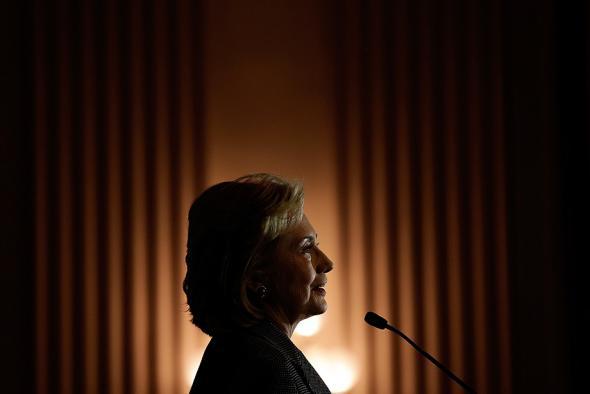
Photo by Win McNamee/Getty Images
The simple fact is that even if everything goes well for Democrats in 2016, even if they hold the presidency and pick up the Senate as well, their long-term prospects are dire. After eight years in the White House, the party has atrophied, and given the partisan and demographic trends that are driving American politics—in particular, the demographic divergence in midterm and presidential elections—it’s not clear what Democrats can do to fix the problem.
Here’s where we are: Far more than its competitor, the Democratic Party is at a crossroads. At the moment, it’s being held together by its president and his potential successor, Hillary Clinton. But this obscures intraparty conflict and the extent to which the party is in desperate need of rebuilding for the second and third decades of the 21st century.
This, of course, is normal. After an eight-year term with the White House, an incumbent party is often exhausted. But with likely vacancies on an ideologically split Supreme Court—to say nothing of the programs of the Obama administration—the stakes for the next election are high. Winning the White House is absolutely vital for Democrats, and although Hillary Clinton is a great asset, she’s—potentially—their only one.
This article is excerpted and adapted from The Surge: 2014’s Big GOP Win and What It Means for the Next Presidential Election, edited by Larry J. Sabato with Kyle Kondik and Geoffrey Skelley.
